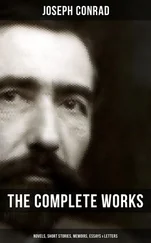1 ...7 8 9 11 12 13 ...20 This was the park inherited by the 5th Duke and his beautiful and wayward wife Georgiana, and by their only son, the 6th Duke. Since Georgiana and her husband both preferred courtly and political life in London, the gardens saw almost no activity for 50 years – a grotto was built for Georgiana but little else – and they were all but neglected.
Soon after inheriting in 1811, the new duke started to rearrange again. Embracing the latest interest in flowers and flower beds, he reintroduced a parterre in front of the greenhouse in 1812 and a few years later he planted nearly two million forest trees in the old Stand Wood, rising on a hill to the east of the house. The trees covered an area of over 550 acres. Oak, ash, beech, elm, sycamore, poplar and birch, larch and spruce firs were all planted 4 feet apart. In the early 1820s, over 30,000 more trees were planted, earning the Duke the Gold Medal of the Society for the Encouragement of Arts, Manufactures and Commerce.
The 6th Duke was a child of the Regency period and highly civilised, a patron of the arts and sciences but, unlike his parents, he was a liberal in politics and sentiment. Delayed by the weather, he had left for Russia that morning, 9 May, not to return to England for six months. In his absence, there was work in progress. He had commissioned the fashionable architect, Jeffry Wyatt, *to begin a vast remodelling of the house and parts of the garden and, when Paxton arrived that morning, the enormous new north wing extension, which would entirely change the scale of the house, was in the final stages of construction. Vast alterations in the layout of rooms and corridors were being planned; a new scullery, larder and kitchens were finished, new staterooms, an elaborate ballroom, dining room and sculpture gallery were projected. It was the height of modern aristocratic luxury, testimony to the Duke’s grand conceptions and deep purse. At the time of Paxton’s arrival, stirred though he must have been by the glorious gardens, this part of the house must have still been something of a building site – he describes the library as looking like ‘a lumber room’.
Wyatt was also turning his attention outside, forming plans for the garden in the new Picturesque *taste practised by Repton and directing a refocusing of attention from landscape and park to a formality of design based around the house, with symmetrical arrangements of sculpture and clipped trees and new embroidery parterres. The parkland immediately surrounding the house was being transformed into a ‘pleasure ground’ in which nature was once again dominated by horticulture. A new wide gravel walk nearly a third of a mile long and to be flanked by the Duke’s favourite trees, the monkey puzzle, was being fashioned, in what the Duke was later to call Wyatt’s ‘first great hit out of doors’. The west garden was to be relevelled out of Brown’s slope, with the sea-horse and tulip fountains fed by underground pipes from water in the cascade and, ever a perfectionist, the Duke also moved the whole cascade sideways to be in a more perfect alignment with the new building.
As the numbers of visitors increased during the early part of the nineteenth century, regulations concerning the visiting public were put in place and altered only marginally each year. Before the railway came to Rowsley, parties were limited to about a dozen; the house and garden were freely open every day from 10 a.m. to 5 p.m, with reduced hours often imposed on Saturdays; carriages had to depart and return later for their passengers; dogs were expressly forbidden and on wet and dirty days permission could be refused to visit the principal apartments. In the gardens, the groups were accompanied by one of the garden staff, and the waterworks were played for all visitors on request.
In the Duke’s Handbook , printed privately for his sisters in 1845, the Duke wrote that when Paxton arrived he found ‘at the kitchen garden … 4 pine houses, bad; two vineries which contained 8 bunches of grapes; 2 good peach houses, and a few cucumber frames. There were no houses at all for plants, and there was nowhere a plant of later introduction than about the year 1800. There were 8 rhododendrons and not one camellia.’ Of the kitchen garden he wrote ‘[it] was so low, and exposed to floods from the river, that I supposed the first wish of the new gardener would be to remove it to some other place.’ Paxton did not move it. He made it flourish.
Whatever he thought of the state of the gardens, Paxton could not have failed to have been dazzled by the gilding on the windows of the south and west aspects of the house. While the story of his scaling of the kitchen garden walls has been mythologised and succinctly demonstrates his extraordinary vitality and thoroughness, an interesting note in an unpublished diary suggests that in fact he particularly felt his own youth on this morning and understood the importance of an impressive start: ‘instead of going to bed, walked round grounds and so set men to work at 6 – being young this gave him the authority which he wanted’.
This done, the housekeeper, Mrs Hannah Gregory, and her niece, Sarah Bown, were waiting to meet him in the kitchen. Sarah was the third of a family of four daughters from Matlock, where her father owned a small mill turning parts for the cotton-weaving industry. She was three and a half years older than Paxton, with a generous private fortune of £ 5,000. Only one hasty sketch by William Henry Hunt exists to show her as a young woman – slender and perhaps rather plain. She was, by all accounts, educated, determined and reserved, and she was on the shelf. Her aunt, running the house and answerable only to the steward, was earning £ 20 a year against Paxton’s £ 65. As the housekeeper, Hannah benefited from living in the house with her full board. As head of the gardens, however, Paxton was one of the highest paid members of the estate, answerable only to the Chatsworth steward, Thomas Knowlton, who earned £ 150 a year.
As Paxton describes, he and Sarah fell in love at first sight. The earliest of his letters to have been preserved is, appropriately, addressed to her, written during 1826. She is his ‘lovely endearing angel … the adorable object of my heart. To say I love and adore thee my dear is but trifling – you are the very idol of soul … rest assured while I draw breath it will be my study to make myself more dear … I am and shall ever be yours till Death.’ She had apparently asked for him to send her a copy of the lines of a popular verse called ‘Fare You Well’, but she could not have known the irony implicit in this leave-taking almost from the moment they first met.
Sarah and Paxton were married on 20 February 1827 and moved into the cottage on the edge of the kitchen garden, the broad river to their right, the steep hills and woods to their left and with the windows of the great house flashing on the slope to the front.
*On the Duke’s suggestion, Wyatt remodelled the Royal Lodge at Windsor, and then, starting in 1824, Windsor Castle for George IV. This got him his knighthood in 1828 and the rather grander name of Wyatville by which he is now most often described.
†The Picturesque as a landscape theory was first described by Sir Uvedale Price in the 1790s. Repton took up the idea in his own landscapes to create the sense of embellished neatness’ where the art of horticulture prevailed over nature.
There were regulations in force in the gardens and it is likely that Paxton reviewed these when he arrived, fresh from the strict environment of Chiswick. The men were encouraged to keep diaries for their own improvement – noting new plants, weather fluctuations and daily activities. Above all else, there was to be prompt attendance, good order and sobriety, and contravention of these key rules could mean instant dismissal. The hours were 6 a.m. to 6 p.m. during the summer with a half-hour for breakfast and one hour for lunch; in the winter, working hours were decided according to the weather. Sunday hours were from 8 a.m. to 4.30 p.m. between November and March and from 7 a.m. to 5.30 p.m. for the rest of the year. Fines were imposed: sixpence for anyone arriving later than ten minutes after the lodge bell had rung, two shillings for anyone absent without permission – a rule applied to Christmas Day like any other. Sixpence would also be levied on any man found lounging or wasting time in the gardens, failing to clean and stack the tools allocated for his personal use, or if any panes of glass were broken through his inattention. The gathering of fruit, vegetables, flowers or plants without permission attracted the serious fine of five shillings, and dismissal on the second occurrence. All fines were deducted fortnightly from wages and, according to James White, one of the under gardeners, ‘if anyone feales himself greaved or aney ways unfairly dealt with in the administeration of these rules I desire to have the matter explained’.
Читать дальше











